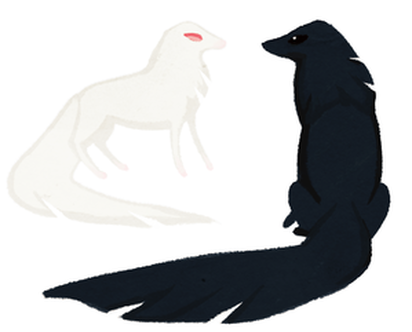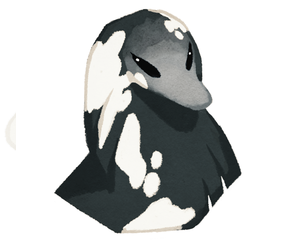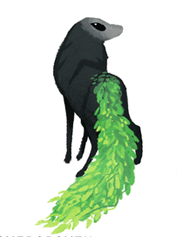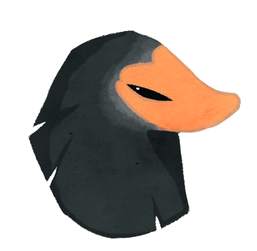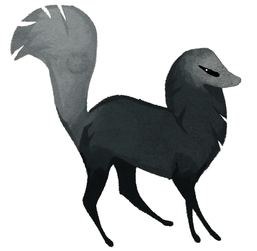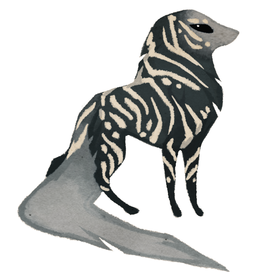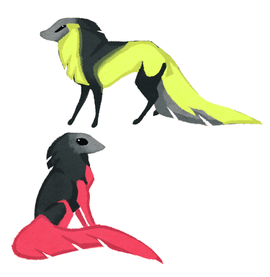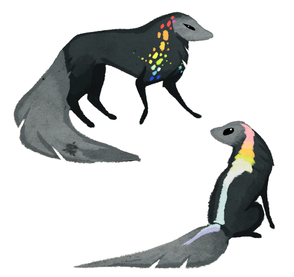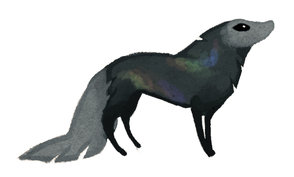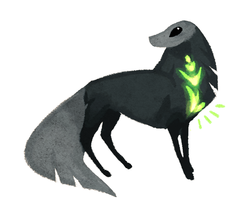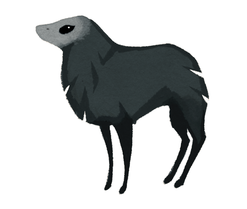Rare Traits
Some esk have rare markings and anatomy.
The traits described here are not available to common esk. They may be included in prizes or special MYO opportunities or they can be purchased in the Energy Exchange using Growth Points. The guidelines here will help you use these traits when designing new characters and modifications.
Rare traits are harder to come by than uncommon ones and require more effort to earn in the game.
Please read the detailed information here and use the visual guide to help you design your esk. A link to the visual guide is at the bottom of this page.
The traits described here are not available to common esk. They may be included in prizes or special MYO opportunities or they can be purchased in the Energy Exchange using Growth Points. The guidelines here will help you use these traits when designing new characters and modifications.
Rare traits are harder to come by than uncommon ones and require more effort to earn in the game.
Please read the detailed information here and use the visual guide to help you design your esk. A link to the visual guide is at the bottom of this page.
|
Albino
Albino esk are solid white with red, pink, white, or blue eyes. The body must be entirely solid without any markings in order to count; adding even a single marking voids this trait. Albino esk can have pink flesh where there is short fur or at the face and toes. Some esk that have very subtle gradients or areas of different shades of white or pale pink will still count as albino even if they are not 100% solid. Flecks and iridescence do not count as markings and will not void this trait. The glowing markings trait can be applied to create a full body ambient glow. Melanism is not a category of rare trait; making the esk solid black is categorized as solid coloration (see below). common: White body with markings. rare: Solid white without any markings at all. Solid Color Solid colored esk have no markings anywhere on their body. Eyes can be any color, and fur can be any color. Some esk that have very subtle gradients or areas of different shades will still count as solid color even if they are not 100% solid. Flecks and iridescence do not count as markings and will not void this trait. The glowing markings trait can be applied to create a full body ambient glow. Making the esk a solid bright color requires the bright coloration trait as a modifier. common: Normal esk markings with variance in color on the body. rare: Solid color without any markings at all. |
|
Piebald
Coloration is partially leucistic. Patches of the body have no pigment (white) while the rest of the body appears normal with normal markings. Eyes may or may not be affected; if the eye falls in a white patch it can be red, pink, white, or pale blue. Nature features may or may not be affected. White areas should be distinct from normal white markings by having a patchy or irregular appearance. Even if you only apply piebaldism to the nature features you will still have to acquire this trait. common: Normal white markings or soft white markings. rare: Patchy or irregular areas of white that seem to overlay normal markings without interrupting the rest of the coloration. |
|
Overgrowth
Overgrowth is when a plant or other nature feature completely replaces one or more of the limbs and/or tail. The body part is not hidden under the nature feature, it is entirely replaced. When the esk leaves its biome and the nature feature disappears the anatomy that was replaced will appear normal (normal legs, normal tail). Replacing other structures like eyes or face is not included and requires an Abnormal mutation. Overgrown tails may need cropped tail or flexible tail traits as modifiers depending on their structure. common: Plants or nature features covering or sprouting out of the legs or tail. rare: Legs or tail are completely replaced by plants or nature feature and the normal anatomy is no longer present. |
|
Bright Mask
Bright, saturated coloring for the overall face requires the bright mask trait. The color must cover the majority of the face. This trait is unaffected by face markings like eyespots or blaze. common: Desaturated or neutral face coloring, including white. rare: Overall bright color on the face. |
|
Flexible Tail
Normal esk tails have a limited range of motion and can only be lifted at the base or drag limply behind them on the ground. Flexible tails have full control and can be expressive like a cat or dog, or prehensile like a monkey. Being able to lift the tail off the ground or curl it around up over the body requires this trait. This trait does not grant an esk a hairless or completely sleek tail, it must have some medium to long fur on it in order to be acceptable. Please respect the trait limitations by illustrating normal esk without this trait with limp dragging tails. common: Tail that drags on the ground with limited movement, or dragging tail that is only lifted at the base. Picture the tail like a horse tail, with only a short thin tail at the base where the fur originates. rare: Full range of motion with the tail, including curling or grasping. A fully extended, flexible and articulated tail exists beneath the hair, giving it the ability to move and pose. abnormal only: A "partially sleek" tail with sleek fur on any portion, even with this trait purchased. |
|
Bright Eye
Eyes that are a bright saturated color or are particularly pale require this trait. The contrasting area of the face may affect how this trait applies, there is no strict color chart or guideline and the trait depends on the overall visual effect of the color contrast. Pastel shades and pure white fall under this trait category. Eyes with this trait can also be shown as glowing. The thin ring of color around common esk eyes is not affected by this trait. common: Dark, almost black eyes. Thin sliver of light color around the eyes is common. rare: Saturated, bright, pastel, glowing, or white eyes. |
|
Unusual Coverage
This trait covers any of the uncommon markings of stripes, spots, unique markings, and flecks when they cover more than 50% of the body. common: These types of markings are always uncommon or rare depending on how much of the body is covered. rare: Markings or patterning covers more than 50% of the body. |
|
Rainbow
Any color progression of ROY G BIV or any markings that give the appearance of a rainbow spectrum are included in this trait. This includes both gradient and hard-edged markings, plus pale or dark rainbows. common: Coloration that has hue shifts that do not cover the entire rainbow spectrum. rare: Coloration or markings that cover the entire rainbow spectrum. |
|
Iridescence
This trait covers shiny fur or areas on the body that change color when viewed from different angles, normally with rainbow or bright coloring. This trait does not require the rainbow coloration as long as it is clearly a superficial lighting effect and not a marking on the body. Iridescence can be applied to albino/solid color esk without voiding those traits. common: Matte or shiny fur without color-changing light reflection. rare: Shining fur that reflects different colors from different angles or appears pearlescent. |
|
Glowing Markings
Any glowing markings or glowing areas on the body other than the eyes are included in this trait. Glowing markings can glow any way you wish and can glow regardless of the time of day. For example, markings could glow at will, remain invisible until night-time, or shine all day. The Glowing Markings trait does not affect nature features that are naturally bioluminescent. This trait can also be used to give your esk an ambient glowing effect (full body glow without markings or patterns). If you want to make nature features glow that do not normally glow in nature you need to add an enchantment. common: Nature features that naturally glow in the dark (ex: certain mushrooms). rare: Markings on the body that glow. |
|
Manx
Esk with the manx trait either have a tiny nub for a tail or the tail is completely absent. If you have overgrowth on the tail and wish for them to appear tailless when outside of their biome you will need to apply this trait as a modifier. common: Long tail the drags on the ground. rare: Tiny nub tail or absence of tail. Cropped and manx can appear similar but are in fact different - use this illustration as a reference when referring to these traits. |

